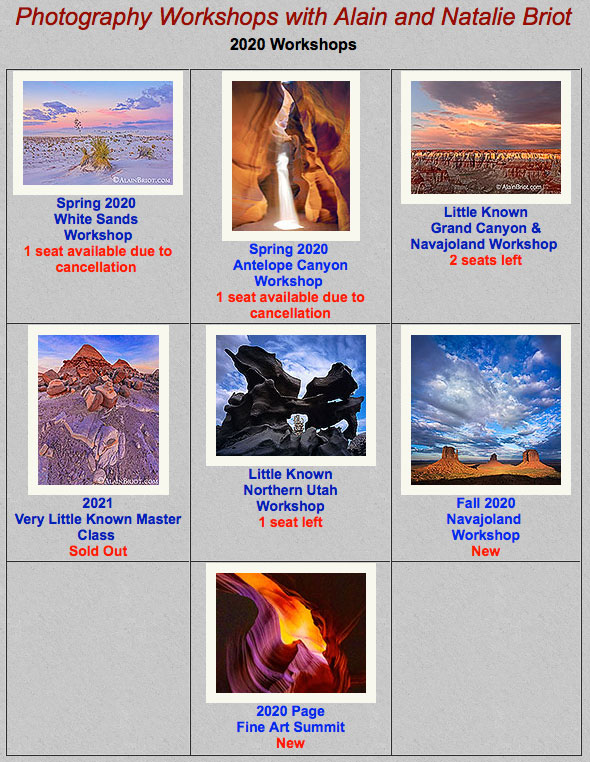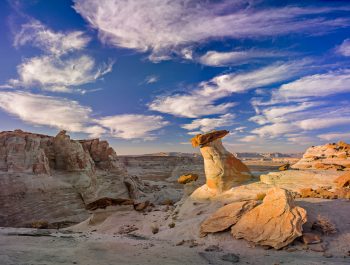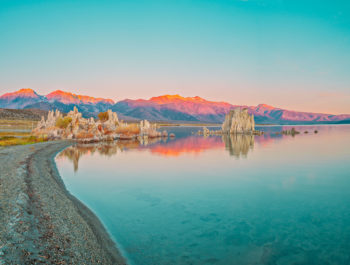Creating Artistic Photographs Part 7 – The Wild Beauty of Nature
The five senses are the ministers of the soul.
Leonardo da Vinci
I see brilliant crimson and vermilion reds in the flowers at my feet. As I visualize these colors in a print I wonder if my camera will be able to capture them. They look so incredible that I have doubts about the capabilities of the medium to reproduce them. Will they look the same on my monitor? Can they look the same on paper?
My worries are aggravated by the fact that these colors do not show up on my LCD screen. They have a different tint and are not as vivid. It appears that the camera cannot capture them as they are. What to do? No matter how hard I think about it I cannot find a solution. Use filters? Certainly, filters can help but they will only do so much. They are crude instruments that apply a color change to the entire image while I only want this change in specific areas of the image. In this instance, I want to change the color of the flowers at my feet. In other instances, I want to change the color of the rocks, clouds, skies or other elements. Unfortunately, filters don’t know flowers from skies or rocks from clouds. They can only color the image throughout.
Exposure? Certainly, exposure has an effect on colors but the image has to be correctly exposed to get details in shadows and highlights. If I over or underexpose to get the colors I want other areas of the image will get the wrong exposure. Doing so would be trading one problem for another.
Change the color balance? I try but the colors go from warm to cool, or cool to warm, or neutral to greenish. No matter what setting I use I cannot get the subtle change I want from the reds the camera captures to the reds I see.
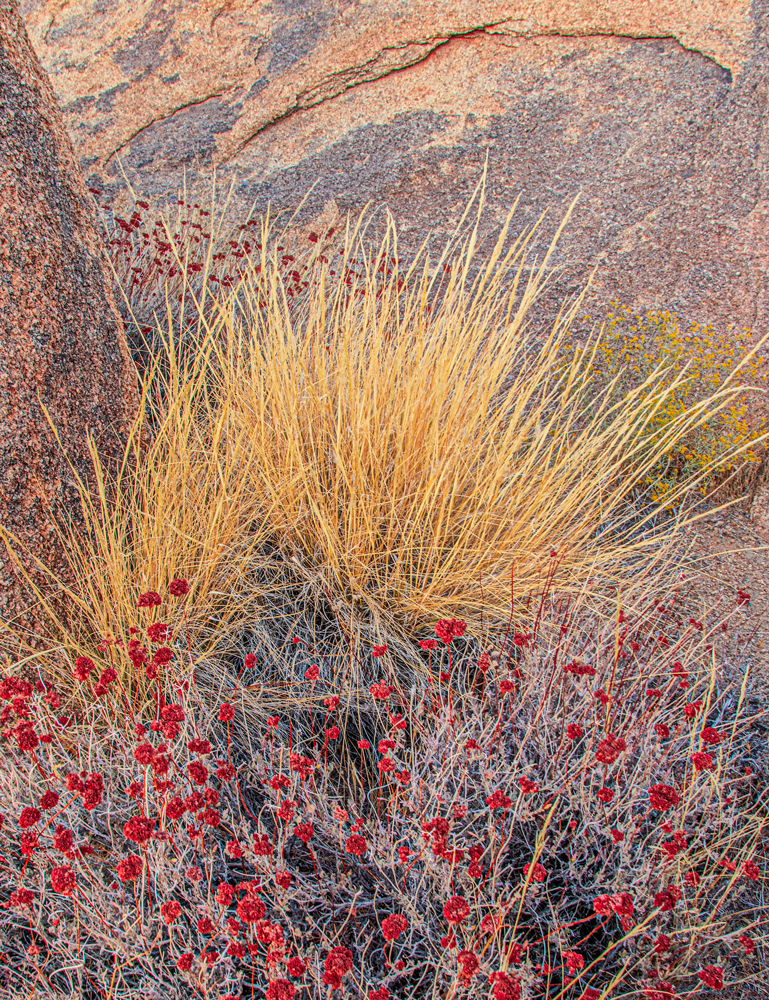
This is a problem I faced since I first started creating photographs. The camera’s inability to capture the colors I see puzzles me. Are these colors the product of my imagination or are they present in the subjects I photograph? I want to reproduce these in a print but the impossibility of capturing them in the camera frustrates me and impedes my creativity. These colors are as wild as nature and as difficult to coerce as wild animals.
This is not all. As if being unable to capture the colors I see was not sufficient the camera cannot capture the other sensory inputs I experience either. The sound of a raven swooping through the air along the canyon wall. The scent of sage. The feeling of warm sandstone under my hand. The taste of sand in my mouth. The feeling of space around me. The emotion of being there. I know the camera will not record any of it because it cannot capture anything else than what I see and even then not as accurately as I would like, not the way I see it.
This is where philosophy is helpful. Descartes says not to desire that which I cannot have. He also says there are situations in which not thinking is the solution. To prove his point Descartes gives the example of being lost in a forest. If I found myself lost in a forest it would be tempting to use my thinking abilities to find my way out of the forest by trying to remember which path I followed and then attempt to backtrack. Unfortunately, when you are lost you are lost. No amount of thinking will help me get un-lost. In the forest all the trees look the same and any direction is as promising as any other. Trying to go this way or that way is to waste time, run out of energy and eventually die lost in the forest.
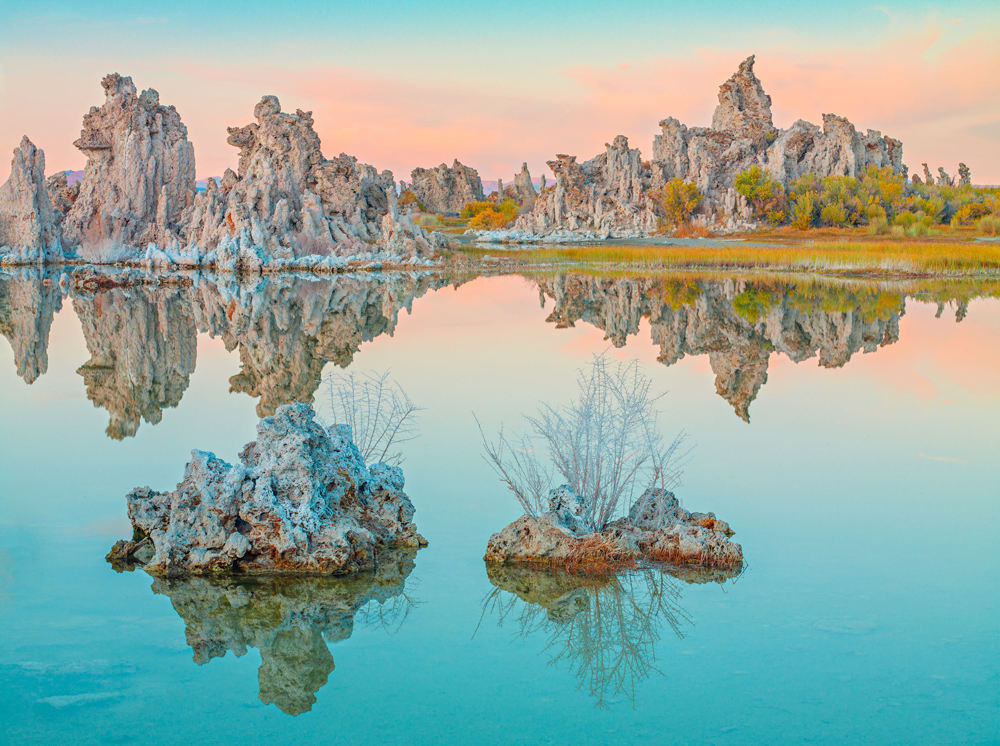
Descartes says that the correct solution is to decide to go in a given direction, stop thinking and walk in a straight line until the end of the forest is reached. The forest will end eventually. The question is how far from where I am. The only way to answer this question is to not deviate from the course I set until I reach the edge of the forest. No amount of reflection will provide a better solution. In this instance not thinking is the answer.
Finding the way out of the forest through reflection is not something I can do. To get out I have to give in to the nature of the forest. I have to accept that it has a beginning and an end and that since I do not know where either is nor where I am between these two points, the best option is to walk straight ahead without deviating my course until I emerge from the maze of trees among which I am lost.
The solution is the same when trying to photograph colors that do not show up on my LCD screen or record sensory input that the camera is unable to capture. There is no point in trying to get the camera to do something it cannot do. The camera can only capture a diminished version of what I see and it is unable to capture what I hear, smell, taste, touch or experience emotionally. Faced with these limitations I need to turn off my mind, stop looking for the impossible and let the camera do its thing. I have to accept that it can only record what it is designed to capture. Expressing what I experience will have to be done by me later on. What I need to focus on now is to record the image. There is nothing more I can do in the field.
The solution to creating the colors I see and expressing the emotions I experience is post-processing. In other words, my work begins when the camera’s job is done. Once back in my studio I can use the virtually limitless capabilities of image processing software to create the colors I want and express non-visual stimuli in my images. Only then, after careful adjustments of the myriads of sliders, checkboxes, color profiles, LUTS, and other esoteric controls will the wild beauty of nature be revealed in the images on my monitor and eventually in my prints.
The camera’s inability to capture the totality of what I see and experience can be a source of happiness or unhappiness depending on how I approach it. I can accept it or I can fight it. I can embrace it or I can be frustrated by it. I can take this inability as a personal affront or I can accept it as the limitations of the optical-mechanical machine I use to create art. In any case, I have no control over it.
Accepting this situation brings happiness while refusing to accept it generates unhappiness. By trying to get the camera to do something it cannot do I am trying to get something which I cannot have, exactly what Descartes says will not bring happiness. Seeking something I cannot have makes me feel that the camera is intentionally keeping colors or emotional content out of my reach. It causes me to believe that expressing these in an image is not something I can do. My unhappiness comes from taking this fact as a personal affront. However, this is not personal. This is how cameras work. It is not directed to me personally because it is the same for all photographers. What I am doing is overthinking the challenge I have to deal with. I am trying to think of a way to get the camera to create the image I want just like if lost in the forest I would be trying to think my way out by looking for the ‘ideal’ route.
Frustration or satisfaction can both come from the same source. The easiest way out of a forest is to walk in a straight line and not worry about how long it will take to get out. The easiest way to depict in a photograph the entire set of sensory input I experience –the colors I see, the sounds I hear, the scents I smell, the textures I touch, the emotions I feel — is to let the camera capture the photograph and not worry what the image looks like on the LCD screen. In both situations, whether forest or photography, the winning solution is the same: set a course of action, follow it and stop worrying about what I cannot control. I know that I will reach my goal in due time. I will get out of the forest, I just need to keep walking. I will get the image to show what I want, I just need to let the camera do its thing then use post-processing to create what the camera cannot capture. Refusing this brings unhappiness. Accepting it brings happiness. Choosing to accept it has made all the difference in my work.
Personal intervention is required in art. It seems obvious when considering painting but it is often overlooked when considering photography. Because a machine is involved, because there is a mechanical means of reproduction between the artist and the subject, it is tempting to believe that the artist is an operator rather than an interventionist. However, the camera is not a machine that operates by itself. It needs someone to choose the composition, set the exposure, trigger the shutter and perform all the other required operations. This machine does not produce final images either. The images it captures need processing, manipulating, optimizing, fine-tuning, printing, curating and so on. All this is done by the artist who, by performing these actions, is adding personal intervention to create final images that are faithful to his vision.
About Alain Briot
I create fine art photographs, teach workshops with Natalie and offer Mastery Tutorials on composition, image conversion, optimization, printing, business, and marketing. I am the author of Mastering Landscape Photography, Mastering Photographic Composition, Creativity and Personal Style, Marketing Fine Art Photography and How Photographs are Sold. All 4 books are available in eBook format on our website. Free samples are available.
You can find more information about our workshops, photographs, writings, and tutorials as well as subscribe to our Free Monthly Newsletter on our website. You will receive 40 free eBooks when you subscribe to my newsletter.
Alain Briot, Arizona
February 2020
Glendale, Arizona
Author of Mastering Landscape Photography,Mastering Composition, Creativity and Personal Style, Marketing Fine Art Photography, and How Photographs are Sold. http://www.beautiful-landscape.com [email protected]


